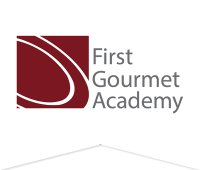It has been said that the kitchen is the heart of the home.
Depending on how often you eat at home, it is also the one place in the house that is the busiest. Whether it is to prepare or store food, it is no question that we use our kitchens every single day. Unfortunately, this particular place in our homes that we use daily is often riddled with potential hazards--some of which we are not even aware of and barely think about. As the busiest place in the house, the kitchen sees a flurry of activity regularly some of which will inevitably lead to burns, cuts, spills, slips and falls. However, just because they are common occurrences does not mean that they are avoidable. To help you determine the risks posed by your kitchen, this article has highlighted some of the most common hazards lurking in your home right now and what you can do to mitigate their danger to you and your family.
Here are just some of them:
1.) Shattered glass casseroles
Glass casseroles may reach adversely to a sudden change in temperature. Whether you are pulling them out the fridge and placing them inside the oven or pulled out of a hot oven then placed on a cool counter (or both), the sudden change in temperature might cause your glass casserole to explode. Not only does this mean ruined dinner for you, but it places you in a precarious situation wherein you can be injured. Keep in mind that chilled casseroles pulled out of the fridge should never be placed directly to the oven (or vice versa) without letting them rest first. Set it on your counter for a bit while your oven preheats. Similarly, when you pull casseroles out of the oven, place them on a trivet on your counter so that it does not make direct contact with the cool surface.
2.) Greasy range hood
A greasy range hood is not only unsightly, but it can potentially cause a grease fire--particularly if you have recipes that require you to flambe or have little flare ups that reach the hood. Always keep your hood range clean to ensure that this does not happen. In the same vein, change your filter regularly as well.
3.) Poor refrigerator storage
Always keep your raw meats in a separate container as they can contaminate other food inside your fridge if they are not stored properly. Keep them in sealed containers or plastic bags to avoid cross contamination. Ideally, they should be placed on lower shelves and never above fruit or any vegetables as their drippings might fall to the lower shelves causing the other food to spoil.
4.) No fire extinguisher
As the place where most fires start, it is fatal mistake to overlook having a fire extinguisher in the kitchen. In this regard, every home should have a fire extinguisher handy near the kitchen. Also, it is recommended that you tell all of your family or household members where it is located or stored.
5.) Unsharpened Knives
A sharp knife is a safe knife while dull knives are not effective and are dangerous. You might think its counterintuitive, but dull knives require you to press harder which may cause injuries as they are more difficult to control. Routinely sharpen your knives and use a non slip food cutting board. In the same vein, keep your knives away from the edge of the counter where they can easily fall and never try to catch a falling knife!
6.) Unattended food
Always pay attention to whatever you are cooking and never turn your back on a pot that is cooking on your stove. If you need to step out while you have something else to do, it is recommended that you turn the appliance off first.
7.) Wet floors
Spills inevitably occur in the kitchen. After all, it is the one place where you are washing dishes or moving a pot of water. However, even while a few insignificant drops or pieces of ice may seem harmless, it can already pose as a slip risk. With this in mind, regard all liquids on the floor as potential fall hazards and wipe them up immediately--especially in places that are often wet and high traffic (such as the stove and sink). In the same way, check your mats and be careful to avoid loose ones as these are trip hazards. For you and your family's safety, place an adhesive backing strip on them to make sure they stay in place.
8.) Plugged in appliances
Apart from being an added cost to your electrical bill, plugged in appliances--no matter how small--such as blenders, food processors, toasters and the like can be a fire hazard. Unplug them when not in use.






